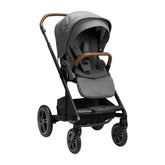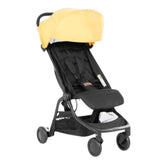7 of the Most Common Types of Birth Injuries to Newborns

Updated 20 Dec 2024
Childbirth is safer now than at any previous time in history, thanks to advancements in obstetrical techniques and the increased use of cesarean delivery in cases of difficult vaginal deliveries. However, occasionally a baby is hurt during the labor and delivery process. When this happens, it is known as a birth injury.
What Is a Birth Injury?
Birth injuries include a wide range of minor to major injuries due to various factors present during labor and delivery. Birth injuries differ from birth defects or malformations and are usually easy to differentiate from congenital defects during a medical examination of the baby.
Common Causes of Birth Injuries
According to the National Institute of Health, the following conditions may be linked to a birth injury:
- Excessive birth weight. This includes babies who weigh more than about 8 pounds, 13 ounces (4,000 grams).
- Macrocephaly. The baby has a head circumference (the measurement around the widest part of the head) that is greater than the 98th percentile on the growth chart.
- Extreme prematurity or low birth weight. Babies born before 37 weeks have more fragile bodies and may be more easily injured.
- Oligohydramnios. This is a condition in which there is little amniotic fluid around the baby during pregnancy.
- Existing birth defects or congenital abnormalities in the fetus. These conditions develop prenatally and may be identified before or at birth, or later in life.
- Malpresentation. This refers to abnormal positioning of a fetus at the time of delivery, including breech, face, brow, or transverse.
- Cephalopelvic disproportion or small maternal stature. The size and shape of the mother's pelvis are not adequate for the baby to be born vaginally.
- Maternal diabetes. Infants of insulin-dependent diabetic mothers are considered to be at high risk for birth injuries, presumably due to excessive birth weight (macrosomia).
- Primiparity. This is the condition in which a woman is giving birth for the first time.
- Dystocia. This refers to difficult labor or childbirth.
- Rapid or prolonged labor. Both pose an increased chance that a baby will suffer from a shortage of oxygen (asphyxia).
- Use of forceps or vacuum. Both of these extraction tools pose additional risks.
- Maternal obesity. Infants born to morbidly obese women are at markedly increased risk of adverse neonatal outcomes regardless of the mode of delivery.

Common Types of Birth Injury (to the Infant)
Birth injury to a newborn infant can include a variety of things, from bruising to nerve damage to broken bones. Sometimes the injury occurs as a result of life-saving procedures. According to the National Institute of Health, about 2 in every 1,000 babies born in the United States suffer a birth injury. Here are some common types of birth injuries affecting babies.
1. Caput succedaneum
Some babies develop severe swelling or bruising in their soft scalp tissues as they make their way through the birth canal. This swelling typically diminishes after a few days with no lasting problems. Infants delivered via vacuum extraction are at an increased risk for this condition.
2. Bruising or forceps marks
The birth canal is a pretty tight squeeze for most infants. Some infants arrive a little banged up from the pressure and contact against the mother’s tissues and pelvic bones. Forcep delivery can also leave marks or cuts on the baby's face and head. This bruising is temporary and typically goes away on its own.
3. Facial paralysis
Excessive pressure on the baby's face during labor or birth may injure the facial nerve, resulting in paralysis. This can also happen when forceps are used during delivery. The paralysis can be observed when the baby cries. Damage from a bruised nerve usually resolves within a few weeks. Torn nerves may require surgery.
4. Cephalohematoma
This is an area of bleeding just beneath the outer tissue covering the baby’s skull. It usually looks like a small lump on the infant’s head in the hours following birth. Treatment isn’t typically needed, however, it may take anywhere from two weeks to three months for the body to reabsorb the blood. This injury is more common in forceps and vacuum deliveries.
5. Fractures
A broken clavicle or collarbone is the most common type of fracture during the labor and delivery process. This typically occurs when there is a problem delivering the baby’s shoulder or if the baby is in a breech position. A newborn with a broken collarbone typically won’t move its arm on the side of the fracture. Healing begins quickly, however, with a firm lump of new bone growth appearing within about a week and a half.
6. Subconjunctival hemorrhage
This type of eye injury is fairly common and doesn’t cause permanent damage. Small blood vessels break in the baby’s eye(s) and cause temporary redness. It does not require treatment. Healing typically occurs within a week to ten days.
7. Brachial palsy
This occurs when the group of nerves connected to the arms and hands (brachial plexus) is injured. This type of injury is most common with shoulder dystocia, or difficulty delivering the baby's shoulder. Bruising and swelling around the nerves will prevent the baby from being able to flex and rotate its arm. This injury usually resolves within a few months, but if the nerves have been torn it may cause more permanent damage. Physical therapy can help the baby’s arm maintain a range of motion while healing.









